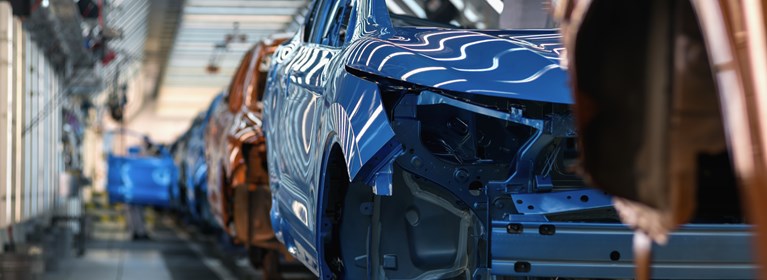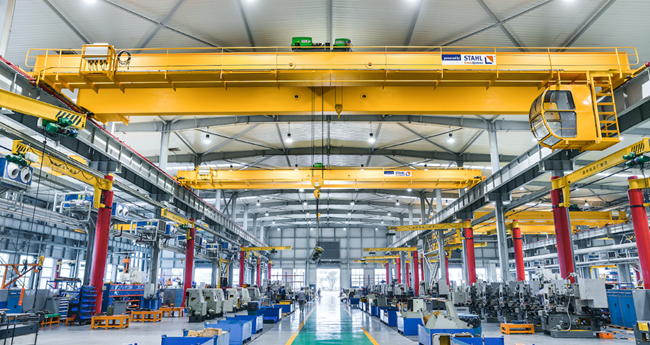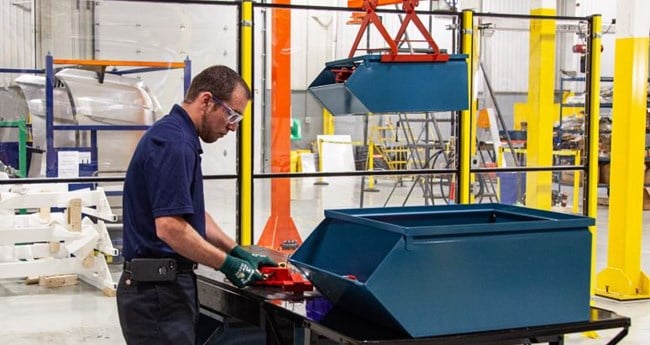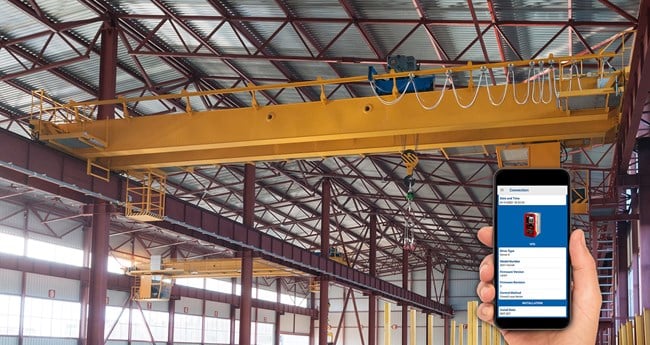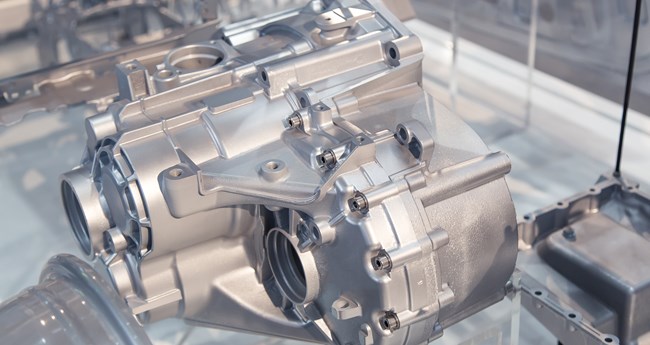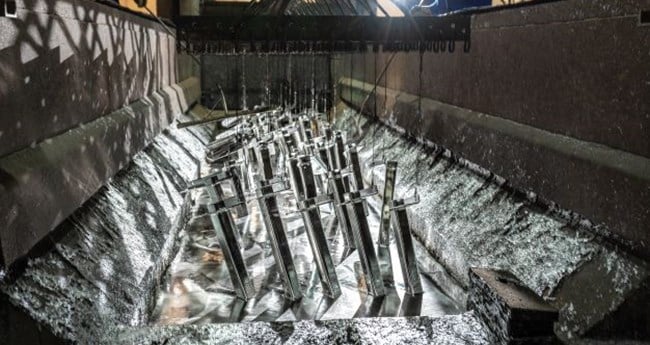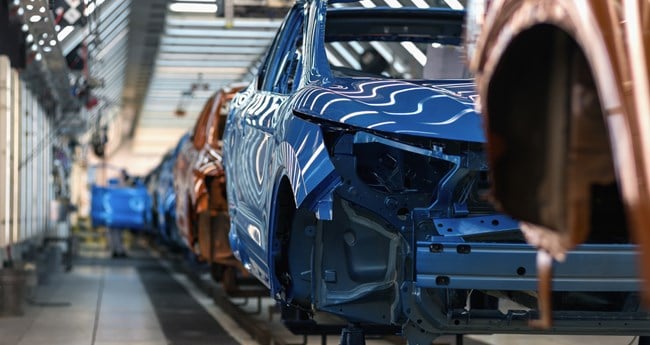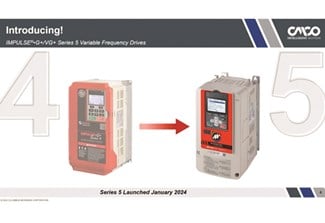Automotive Factory Automation from Start to Finish
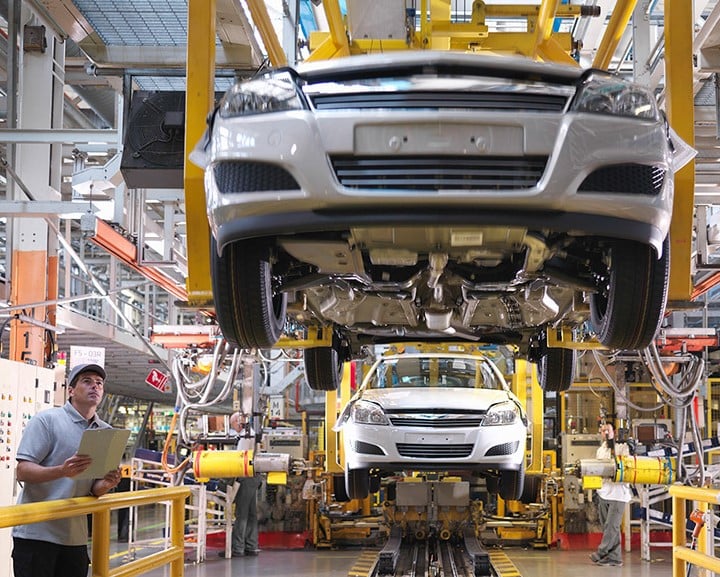
From the first step of the automobile production process to taking the final assembled vehicle off the line, automation technology is hard at work. Time is money, so productivity is critical and uptime is of the utmost importance.
For this reason, optimization of the automotive assembly line has always been an essential element within any automobile manufacturing facility and automation can help. In 1954, General Motors introduced Unimate, the first industrial robot, and is one of the largest users of robotic automation among U.S. automakers. And, that was only the beginning. Automotive automation technology continues to evolve, helping manufacturers meet the needs for increased productivity.
So, what is automotive automation?
Simply put, automotive automation is the use of computer-programmed mechanical equipment during the assembly of an automobile. Automotive automation technology ranges from a pre-programmed overhead crane repeatedly delivering transmissions to a set location in a facility to robotic arms installing windshields without the need for human assistance. Not only does this technology reduce takt time, it reduces the chance of human error and accidents. Learn more about our automotive automation solutions.
Contact Our Automotive Automation Team To Get Started Today
Automated Car Manufacturing
The vehicle skeleton is assembled in the BIW stage, but the external-facing pieces, such as the roof, side panels, doors, hood, trunk, bumpers, and more, are assembled in this phase. Rather than fetching all these components one by one, an auto-dispatch system is used to automatically retrieve the items, allowing the operator to work on the next step in the production process.
Discover the benefits of Intelli-Guide
During this stage, everything from the HVAC system and seats to the radio and dashboard are assembled. Once the interior trim has been assembled it is married to the chassis. Using specialized software, specifically designed for material handling applications, parameters such as hook height, load status, and speed can be programmed, monitored, and adjusted as necessary.
See ProPath in Action
To keep your system and products functioning effectively, advanced diagnostics provide critical information, including positioning and motion, equipment status, and energy usage. If your system goes down unexpectedly, Intelli-Connect™ Diagnostics and Analytics helps reduce your Mean Time To Recover (MTTR).
Integrate Intelli-Connect Into Your Facility
Automotive Assembly Line Automation
The automotive automation industry is extremely competitive. With a growing number of vehicles on the road, it has become more important than ever to reduce weight to increase fuel efficiency. One way in which manufacturers are achieving this goal is by using die castings. Automotive die casting uses a metal molding process to produce parts from molten metal (die). They then cool the metal and solidify it into parts such as engine blocks or gearboxes machined into shape. By using this technique, automotive parts can be made lighter and more fuel efficient without compromising quality.
See How Overhead Crane Safety Solutions Can Help
In automated car manufacturing, the vehicle must be properly painted, not just for aesthetic reasons, but to increase vehicle longevity. One method for reliably applying paint is the electro-static coating process. This process involves charging the paint and the material being coated with opposite charges. Since opposites attract, only the desired part will adhere to the surface. Electro-static coating has one major drawback: its high voltage (up to 700 volts). Automating dip tank treatment can reduce worker exposure to hazardous chemicals and high voltage by removing them from dangerous situations. Intelli-Lift™ System can help prevent off-center picks by detecting a load misalignment or snag condition and alerting operators with a visible and audible warning before a dangerous situation occurs.
Watch Intelli-Lift At Work
In order to help an automotive assembly line run efficiently and safely, line speed matching allows multiple hoists to lift and traverse one item in tandem with a piece of equipment on the ground (e.g. conveyors). This allows a single operator to mate two items on an assembly line safely and more efficiently. When there’s a need to synchronize multiple drives, our IMPULSE® Drive Synchronization Software makes it easy. This customized Magnetek brand software allows you to synchronize IMPULSE•VG+ Series 4 Drives to precisely control motion and prevent the operator from making an uneven lift, increasing operator and facility safety. It also helps improve productivity by eliminating the need for the operator to manually level the hoists.
Browse Our Collection of Drives and Support Software
Central America-Andean-Caribbean - EN




